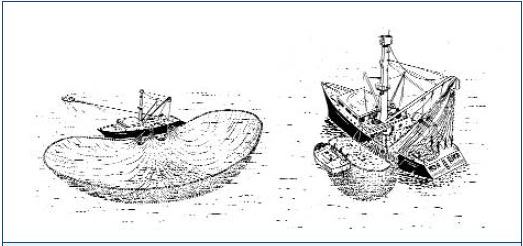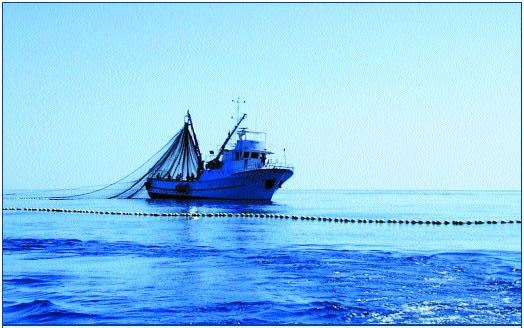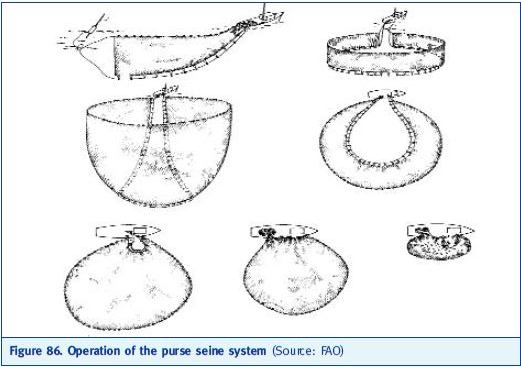Catching methods for “seed” material
Specimens that are to be used in capture-based aquaculture are caught with traditional fishing gears. The selection of fishing gear is very important: it must take into account the stress that occurs during fishing and should provide specimens that able to adapt easily and rapidly to captivity, which have not suffered physiological stress that could have survival implications.
Tuna are prone to a build up of lactic acid, which is produced during muscular contractions following capture. Due to their complex circulatory system, it is essential that no external stress causes damage to the “rete mirabilis”; any damage or lesions are liable to cause long-term dysfunctions which may lead to the death of the individual.
Individual “rod fishing”, with a single fish hook, has been adapted for catching juvenile and sub adult specimens. Barbless hooks can be used for capturing specimens weighing several kilos. However, the fishing technique most physiologically suited to catching bluefin tuna for capture based aquaculture is the purse seine (Doumenge 1999). The purse-seine fishery has become the most important provider of live tunas (minor quantities are provided by tuna traps) for capture based aquaculture. The fish are first caught using a purse seine in the traditional manner, before being transferred to transport cages by “swimming through” (Di Natale et al. 2003), as described in the following section of this report. Purse-seining is a modern fishing technique developed in the 1960s. It involves paying out a large net off the stern of a fishing vessel, with a bottom weighted (lead) line and a top float line that extends the net vertically in the water.
A second smaller vessel (skiff) pulls one end of the net from the purse seiner as both vessels encircle the school of fish from opposite directions until finally reconnecting the skiff end of the net with the purse seine vessel (Figure 84).

Figure 84. Purse seine system (Source: FAO)
The purse seiner then draws the bottom lead line closed, creating a “purse” to entrap the school of tuna (Buck 1995). Purse seining is a very efficient system that can be defined as an “industrial fisheries tool”, is species-selective, and in the Mediterranean Sea does not entail high bycatches of cetaceans (Tudela 2002b). It is the only system that allows the transfer of live fish to the capture-based aquaculture cages. It is therefore an essential component for industrial tuna farming, and is used all over the world. Table 44 shows purse seine captures versus the total catch in the Mediterranean area (Tudela 2002b).
Table 44. Catch of bluefin tunas by purse seine compared to total catch in the Mediterranean

While purse seine catches are showing a decrease, mostly due to the ICCAT catch limits, the total amount of farmed bluefin has continuously increased and the proportion of farmed tuna in the total purse seine catches has also increased annually. 30% and 37% of purse seine catches in 1999 and 2000 respectively were introduced to capture-based aquaculture (Miyake et al. 2003). Purse seining in the Mediterranean is illustrated in Figure 85, while Figure 86 illustrates the general operation of the purse seining system.

Figure 85. Purse seine operation in the Mediterranean
Another technique employed in bluefin tuna fishing is the use of tuna traps placed in the course of the trophic or genetic migration. As in purse seining, it is essential not to stress the animals. A floating cage is attached to the end chamber of the tuna trap. This system is particularly suited to the capture of specimens belonging to the “giant” class, weighing hundreds of kilos (Doumenge 1999). In Japan, bluefin tuna fingerlings are caught by mid-water trawls. The mortality rate at the time of stocking was 85% in 1974; however, after some modifications to the fishing gear, mortality declined to 15% in 1984. These tuna weigh 100-300g at the time of stocking (Norita 2003).

Figure 86. Operation of the purse seine system (Source: FAO)